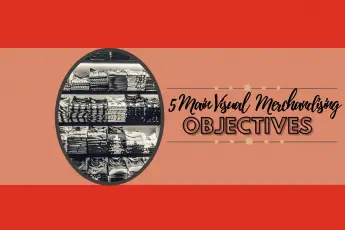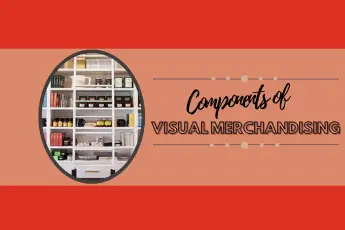Types of Retail Book Displays
Retail book displays are a crucial element of bookstores and other retail outlets selling books. An attractive and well-organized display can help to draw customers in, encourage them to browse, and ultimately increase sales. Here are some of the most popular types of retail book displays:
- Table Displays: Table displays are a simple and effective way to showcase new and popular books, as well as seasonal or holiday-themed titles. They can be arranged in a variety of ways, such as by genre or author, and can be accompanied by signage and other promotional materials.
- Wall Displays: Wall displays can be used to highlight specific categories of books, such as bestsellers, classics, or children’s books. They can be arranged in various patterns, such as in a grid or in a zigzag shape, and can incorporate other elements like shelving, signage, and artwork.
- Window Displays: Window displays are a great way to capture the attention of passersby and promote specific titles or themes. They can include props, lighting, and other visual elements to create a compelling and eye-catching display.
- Endcap Displays: Endcap displays are located at the end of aisles and can be used to showcase books on a specific theme or topic. They can be arranged in a variety of ways, such as in a pyramid or spiral shape, and can be accompanied by signage or promotional materials.
- Spinner Displays: Spinner displays are designed to hold a large number of books in a small amount of space. They can be used to showcase a specific category of books, such as paperbacks or graphic novels, and can be easily rotated for easy browsing.
In addition to these types of displays, there are many other creative ways to showcase books in a retail setting. The key is to create displays that are visually appealing, easy to navigate, and tailored to the interests and preferences of the target audience.
Book Display Ideas
There are many creative ways to display books in a retail setting. Here are some ideas:
- Face-Out Display: This is a classic way to display books where you showcase the cover of the book facing outwards on a shelf or table.
- Themed Display: Create a display that is centered around a theme or a topic such as a holiday, seasonal change or a popular genre.
- Interactive Display: Consider displaying books in a way that encourages customers to pick them up and interact with them. For example, create a reading nook with comfortable chairs and a selection of books.
- Vertical Display: Using bookshelves and stands to create vertical displays can be visually appealing, and it allows you to showcase more books in a smaller space.
- Window Display: Creating a display in your store’s window can be an excellent way to attract customers and showcase your books.
- Bestseller Display: Highlight your most popular books by creating a dedicated display or section in your store.
- Author Spotlight: Create a display focused on a particular author or illustrator. This could include signed copies of their books or artwork.
- Staff Picks Display: Encourage your staff to select their favorite books and display them with a personal recommendation.
- Creative Shelving: Use unique shelving options such as tree branch shelving or book cart displays to create an eye-catching display.
- Color-Coded Display: Arrange your books by color to create a visually striking display that can draw customers’ attention.
Book Storage Ideas
There are many creative ways to store and display books in a retail or home setting. Here are some ideas:
- Bookshelves: This is the most traditional way to store and display books, but there are many different types of bookshelves available. You can choose from wall-mounted shelves, freestanding bookcases, ladder bookshelves, corner bookshelves, and more.
- Book carts: Book carts are a great way to store and display books, especially if you have limited space. You can use a small rolling cart to display new releases or feature a specific author or genre.
- Wall-mounted displays: You can create a unique book display by mounting shelves or brackets on the wall to hold books. This is a great option for small spaces or areas where floor space is limited.
- Bookends: Bookends are a simple and effective way to keep books organized and displayed on a desk or shelf. You can choose from a wide range of styles, including decorative bookends that add a touch of personality to your display.
- Decorative boxes: Decorative boxes can be used to store and display books, especially if you want to keep them out of direct sunlight. You can choose from a range of sizes and styles, from small wooden boxes to larger fabric-covered boxes.
- Wire baskets: Wire baskets are a great way to store and display books, especially if you want to create a rustic or industrial look. You can use a single basket to display a few books, or group several baskets together to create a larger display.
- Pegboard displays: Pegboard displays are a versatile and customizable option for storing and displaying books. You can attach shelves, hooks, and other accessories to the pegboard to create a unique display that suits your needs.
Inspiring Book Displays
Inspiring book displays can be created using various elements, such as props, lighting, and creative arrangements. Here are some ideas:
- Color-coded display: Arrange books by color to create an eye-catching display that draws attention to the books themselves.
- Themed display: Create a display that centers around a specific theme or genre, such as mystery, romance, or travel. Use props to help bring the theme to life.
- Elevated display: Use risers or platforms to create a visually interesting display with books at varying heights.
- Bookshelf as art: Use an entire bookshelf as a work of art by arranging books in a visually interesting and unconventional way.
- Interactive display: Create an interactive display that encourages customers to engage with the books in a fun and unique way, such as a guessing game or a choose-your-own-adventure display.
- Book bundles: Bundle together books that share a theme or genre and display them together with a creative label or tagline.
- Author spotlight: Highlight a particular author or book series with a dedicated display that includes information about the author and their works.
- Seasonal display: Create a display that reflects the season, such as a summer beach reads display or a winter holiday book display.
- Vintage display: Use vintage props, such as old suitcases, typewriters, or globes, to create a nostalgic display that draws attention to classic or vintage books.
- Window display: Create a captivating window display that showcases a selection of books in an eye-catching and visually interesting way to entice passersby to come inside.
Best Book Display Stands for Small Businesses
There are several options available for book display stands for small businesses. Here are a few ideas:
- Acrylic Book Stands: Acrylic book stands are a popular choice for small businesses as they are lightweight, easy to move around, and have a sleek and modern design.
- Wire Book Racks: Wire book racks are another option for small businesses as they are lightweight and easy to move around. They also have an industrial and modern look that can add character to any space.
- Wooden Bookshelves: Wooden bookshelves are a classic option for small businesses. They are sturdy, durable, and can add warmth and character to any space. Wooden bookshelves come in a variety of sizes and styles to fit any decor.
- Slatwall Book Displays: Slatwall book displays are a versatile option for small businesses. They can be mounted on the wall, are customizable, and can be used to display books, magazines, or other literature.
- Tabletop Book Displays: Tabletop book displays are perfect for small spaces or for creating a unique display. They can be used on a countertop, table, or shelf and are available in a variety of styles and sizes.
Overall, the best book display stand for a small business depends on the specific needs and space available. It is important to choose a display that is functional, aesthetically pleasing, and fits with the overall style of the business.




